We may receive a commission when you use our affiliate links. However, this does not impact our recommendations.
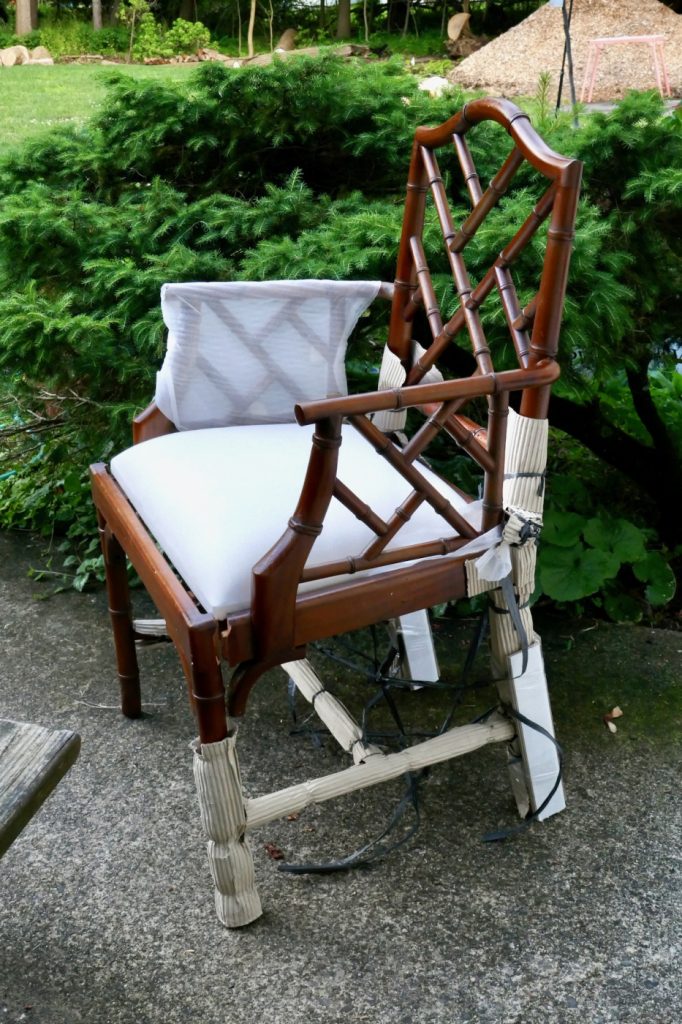
The brand new but broken chair that I just finished restoring. Although the company denoted the chairs as Stained Walnut, the actual material used for building them was solid mahogany.
A few weeks ago, my spouse purchased two Faux bamboo Chippendale mahogany chairs for our dining table. The chairs were a reproduction of a Victorian furniture style and meant to match the interior look he and the decorator intended. Advertised as made of solid Mahogany but surprisingly finished in “Stained walnut,” I wasn’t sure what we would get since, at around $750, I wasn’t confident that the piece would fulfill my expectations of being both beautiful and long-lasting.
The well-wrapped chairs arrived in two separate shipments. After unwrapping and examining the first chair, I thought I recognized the hallmarks of the semi-industrial craftsmanship I learned to respect more than a decade ago when I worked at the Robert Lighton Furniture company. The overall feel and look of the chair reminded me of some of the pieces I was in charge of processing, repairing, or alternating upon their arrival from India to our Brooklyn, New York workhouse. The company I worked for had a relationship with three Indian furniture manufacturers that produced excellent pieces of furniture out of reclaimed mahogany and teak wood. This furniture was made in small to medium-sized factories by skilled woodworkers who did not use CNC machines or other high-tech woodworking equipment. The factories relied on basic woodworking machines such as table saws, bandsaws, lathes, and many specialized craftsmen (carvers, turners, caning workers, etc.) who produced some of the most detailed work I have seen. Although made from solid wood and joined together by classic joinery, a small percentage of the pieces arrived broken or damaged, and I was in charge of repairing and restoring them.
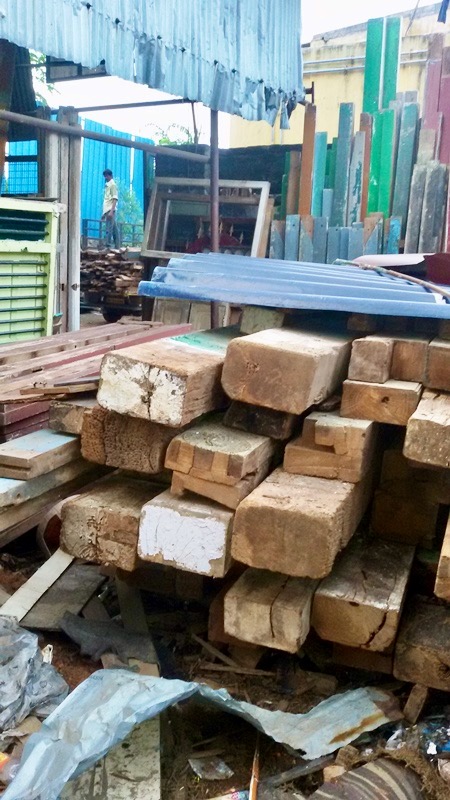
A stack of reclaimed teak timber from dismantled buildings. Many furniture manufacturers in India transform reclaimed wood into new furniture.
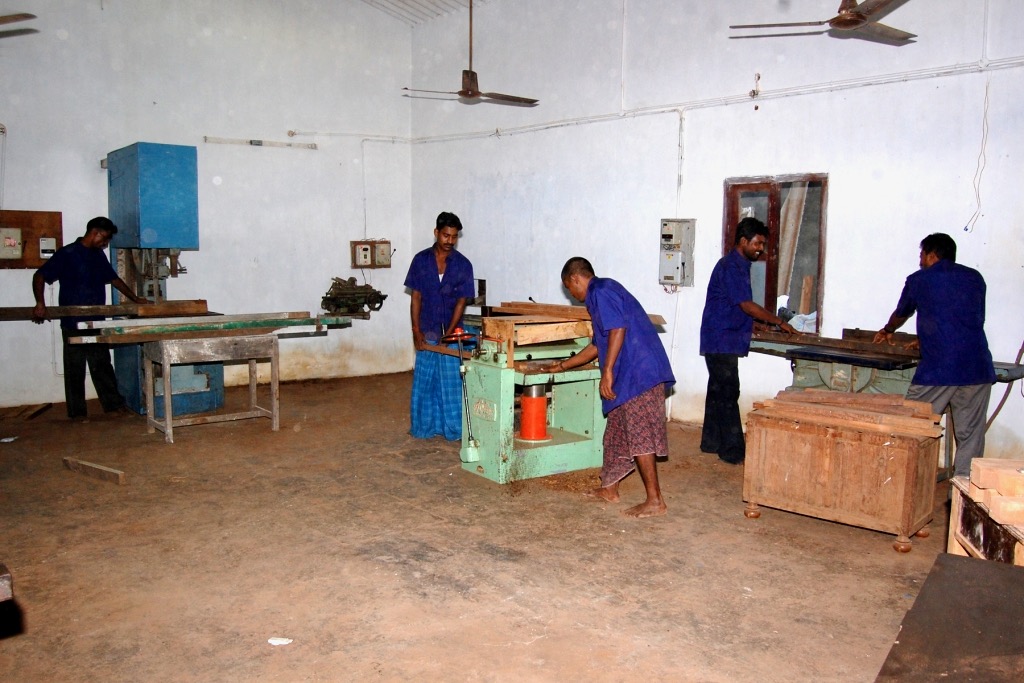
Pictures from Yamuna Arts, a traditional furniture manufacturer from India.


Back home, when we unwrapped the second chair, we noticed that it had been severely damaged – most likely even before it entered the shipping box (as I couldn’t see any apparent damage to the cardboard container). The evident damage revealed a few facts about the chair’s construction. First, it exposed the reality that the piece was made of solid mahogany. Second, the legs/aprons joints were mortise & tenon – attesting to a higher quality of construction than the typical dowel joints common in mass-produced pieces. Third, I noticed that the round rails penetrated the legs via a mortise hole. Lastly, and to my disappointment, all the fluted rounded decorative cross or diagonal rails were clandestinely stapled together without any reputable inner connections to strengthen the joints.
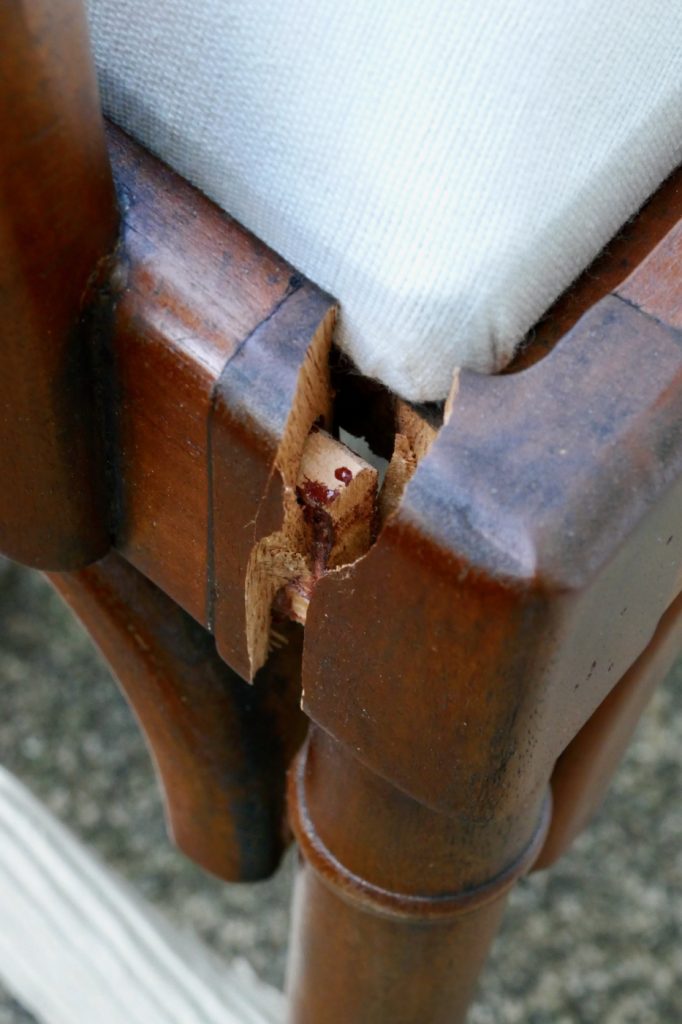
I am almost sure this piece was made in one of the Indian factories that the old company I worked for used to order from, but I have no definitive way to prove it.
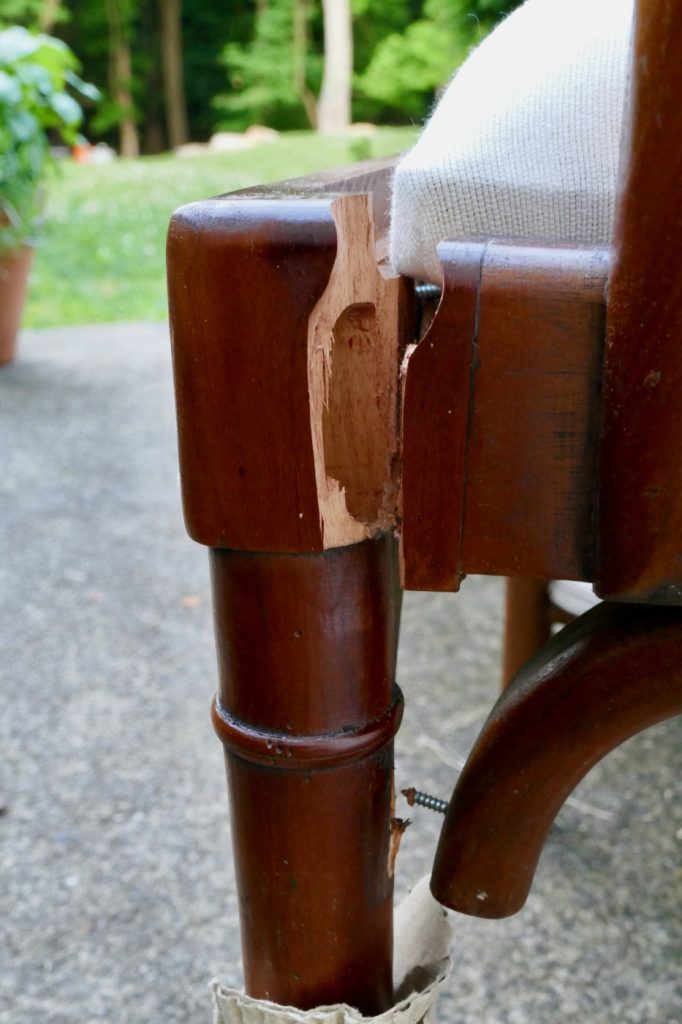
A broken leg and apron joint.
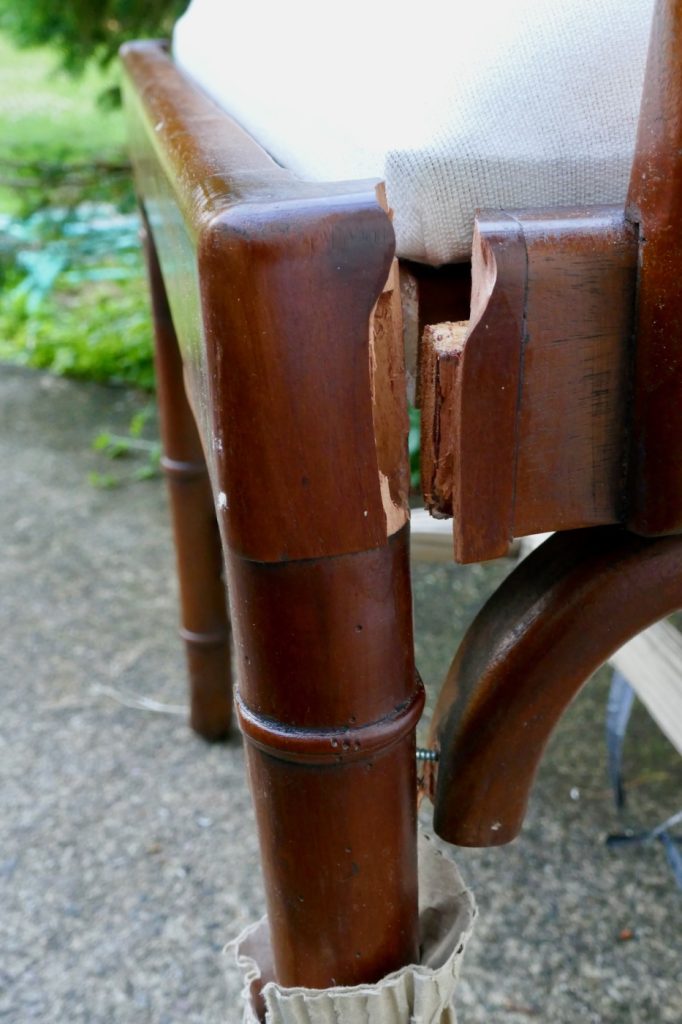
A detached corner bracket
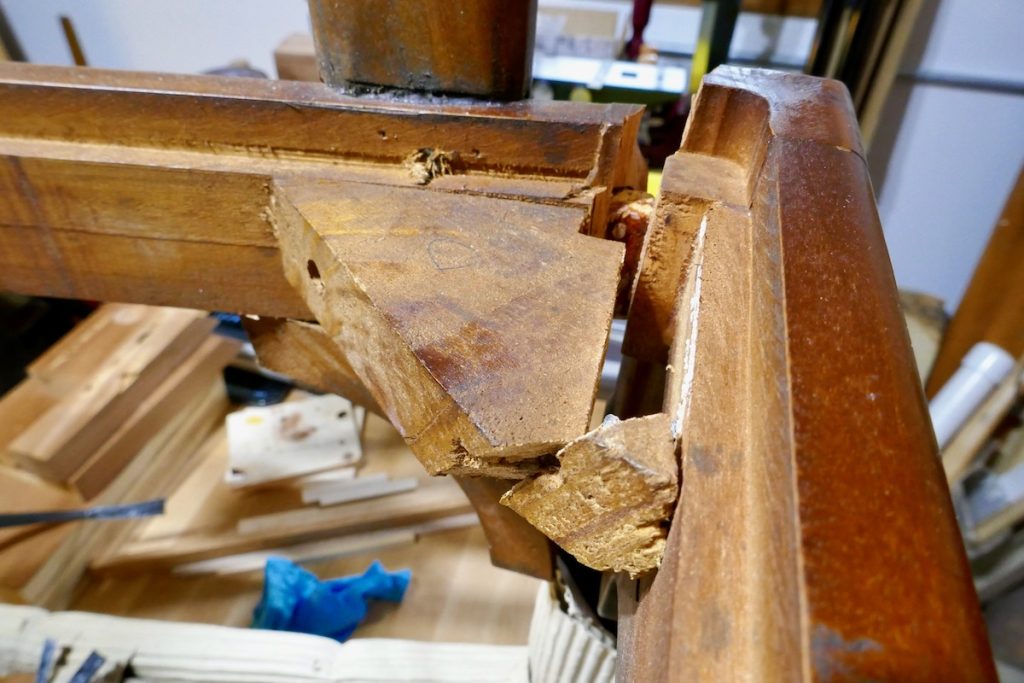
A broken corner block. 
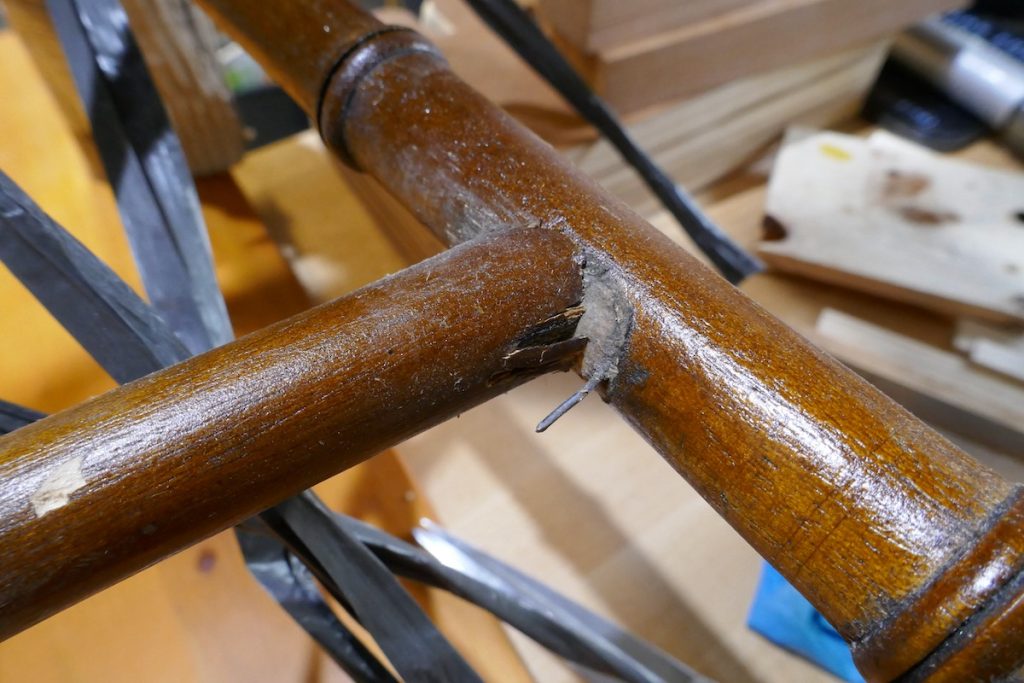
The center stretcher was just stapled to the rails.



After this first impression, we contacted the store, and they promised to send us a new piece free of charge. Since we didn’t have to return the chair, I jumped on the opportunity to hone my old – but not forgotten – restoration skills and fix this brand-new chair. In the next blog entry, I will detail the work I have done.
Here are some supplies and tools we find essential in our everyday work around the shop. We may receive a commission from sales referred by our links; however, we have carefully selected these products for their usefulness and quality.









